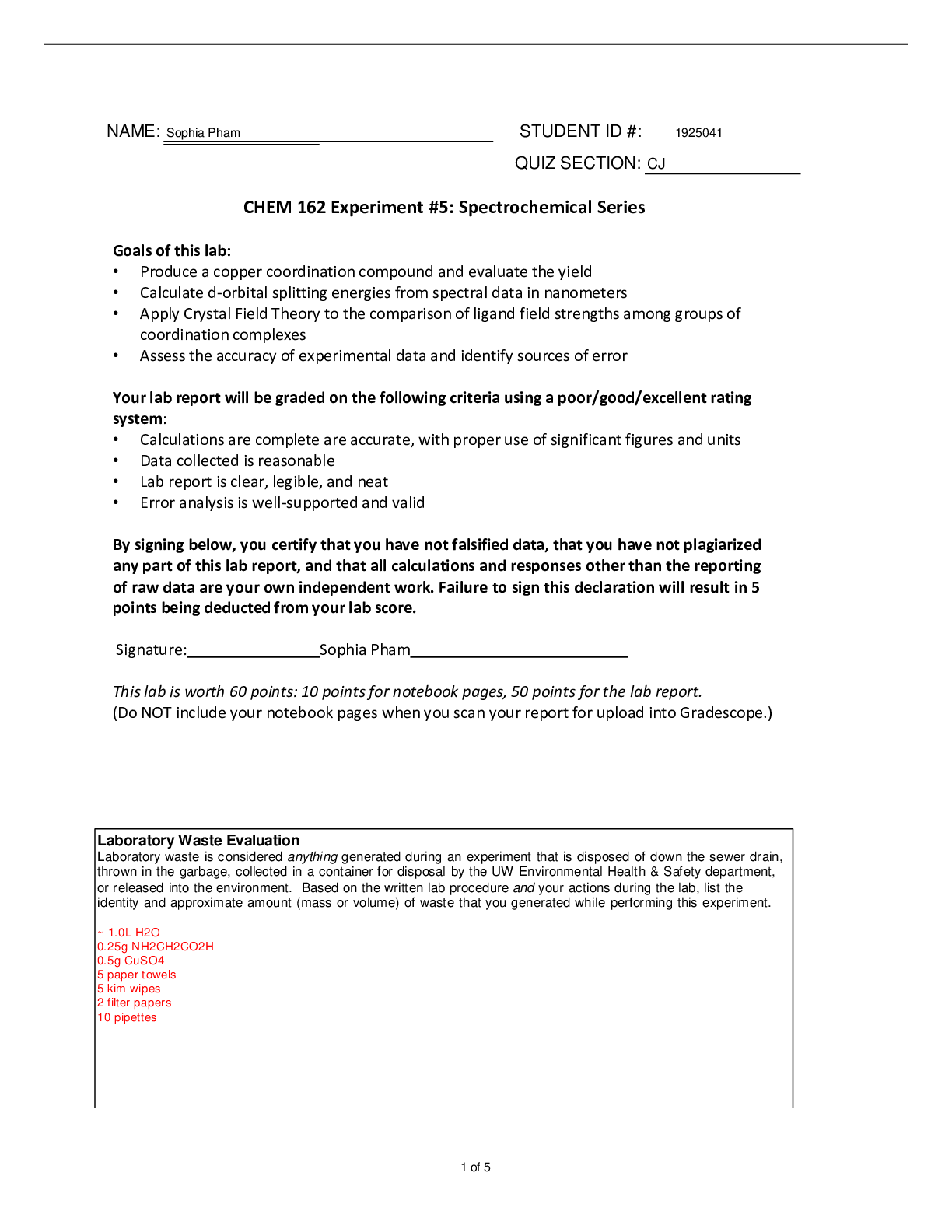Biology > Lab Report > BIOL 4510AP Lab Report 1_Insect Metabolism. (All)
BIOL 4510AP Lab Report 1_Insect Metabolism.
Document Content and Description Below
BIOL 4510.510 An Investigation of Insect Metabolism Under a Variety of Stressors Performed: February 14, 2019 DUE: February 28, 2019 Lab Partners: Sydney Teer, Abdi Dahir, and Jada Hutcherson TA: ... Jessica Rippamonti 1Introduction All living organisms maintain life through numerous chemical reactions taking place inside of cells and between cells to keep organs and tissues functioning properly. Adding together the sum of all of these reactions taking place will yield the organism’s metabolic rate (MR). The MR can be measured by direct calorimetry heat production) or indirect calorimetry, which is a measure of the oxygen used and the carbon dioxide released by the animal. A third method is to evaluate the body temperature (Tb) versus the ambient or environment temperature (Ta) which will reveal how the animal responds to external temperature and regulates, or does not, their internal temperature. The terms used to classify an organism’s heat response/production and sustainability include endotherm, ectotherm, homeotherm, and poikilotherm. Endothermy encompasses organisms that maintain higher MR as well as heat produced while ectothermy includes those with lower MR and that lose heat produced much more easily to the environment. These organisms display behavior that aid in maintaining an appropriate internal temperature. Homeotherms are animals that keep a narrow range of Tb despite wide range and fluctuation of the environment temperature. In contrast, poikilotherms allow their Tb to fluctuate just as the Ta does. After reading into the background of insect metabolism, I predict that the three different stressors will yield different MR responses. Starvation will likely cause a decrease in MR for the insect to conserve energy before its next meal while an excess of food may cause an increase in MR to expend the buildup of energy. Temperature and MR will have a liner relationship because insects are poikilotherms, so their Tb should fluctuate with the Ta. For the final stress, noise, it is likely that more noise, as in higher frequency of tapping or louder music playing, will cause an increase in MR as the insect is startled or agitated. Similar to a human’s “fight or flight” response to sudden, unexpected loud noises. 2 [Show More]
Last updated: 3 years ago
Preview 1 out of 12 pages
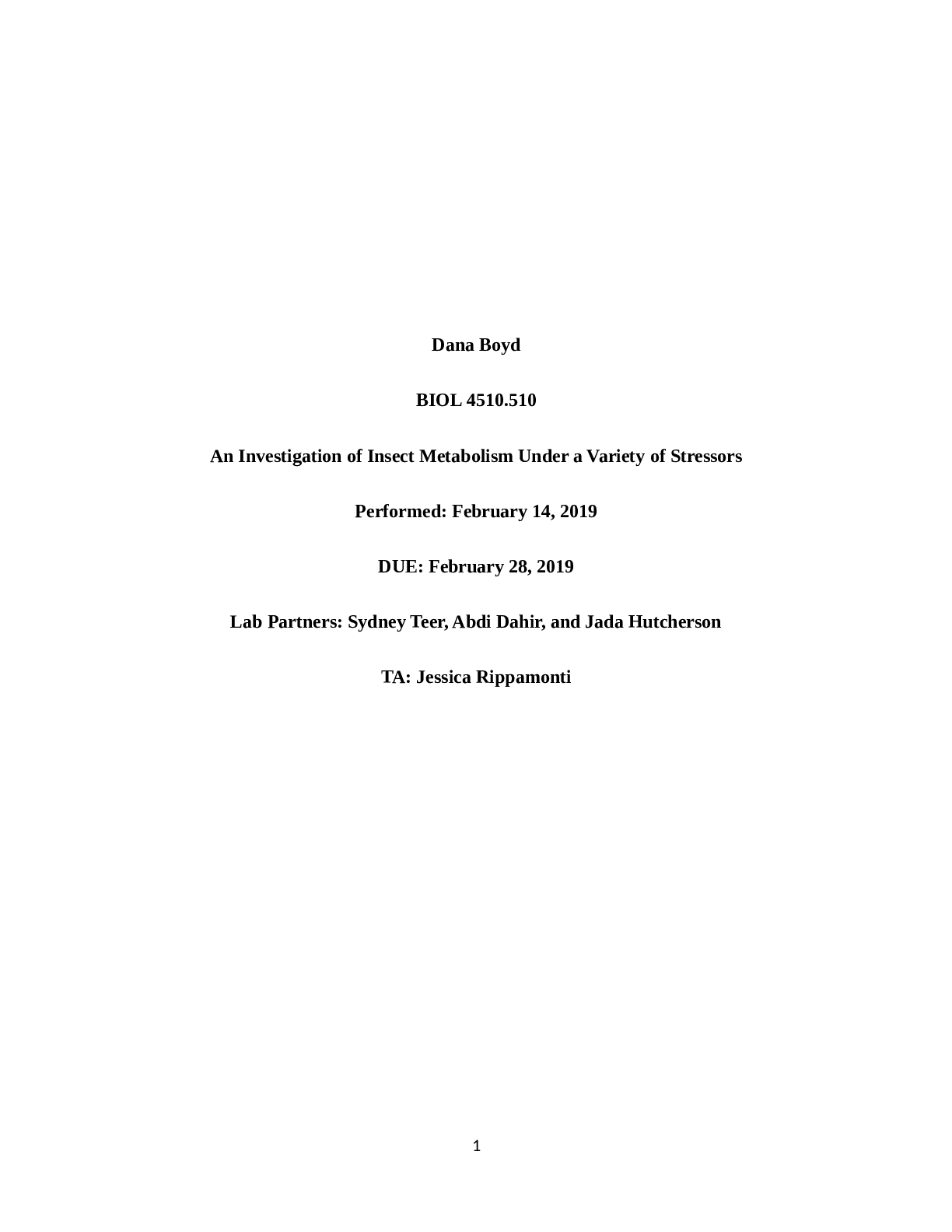
Buy this document to get the full access instantly
Instant Download Access after purchase
Buy NowInstant download
We Accept:

Reviews( 0 )
$12.00
Can't find what you want? Try our AI powered Search
Document information
Connected school, study & course
About the document
Uploaded On
Jun 15, 2021
Number of pages
12
Written in
All
Additional information
This document has been written for:
Uploaded
Jun 15, 2021
Downloads
0
Views
222

.png)





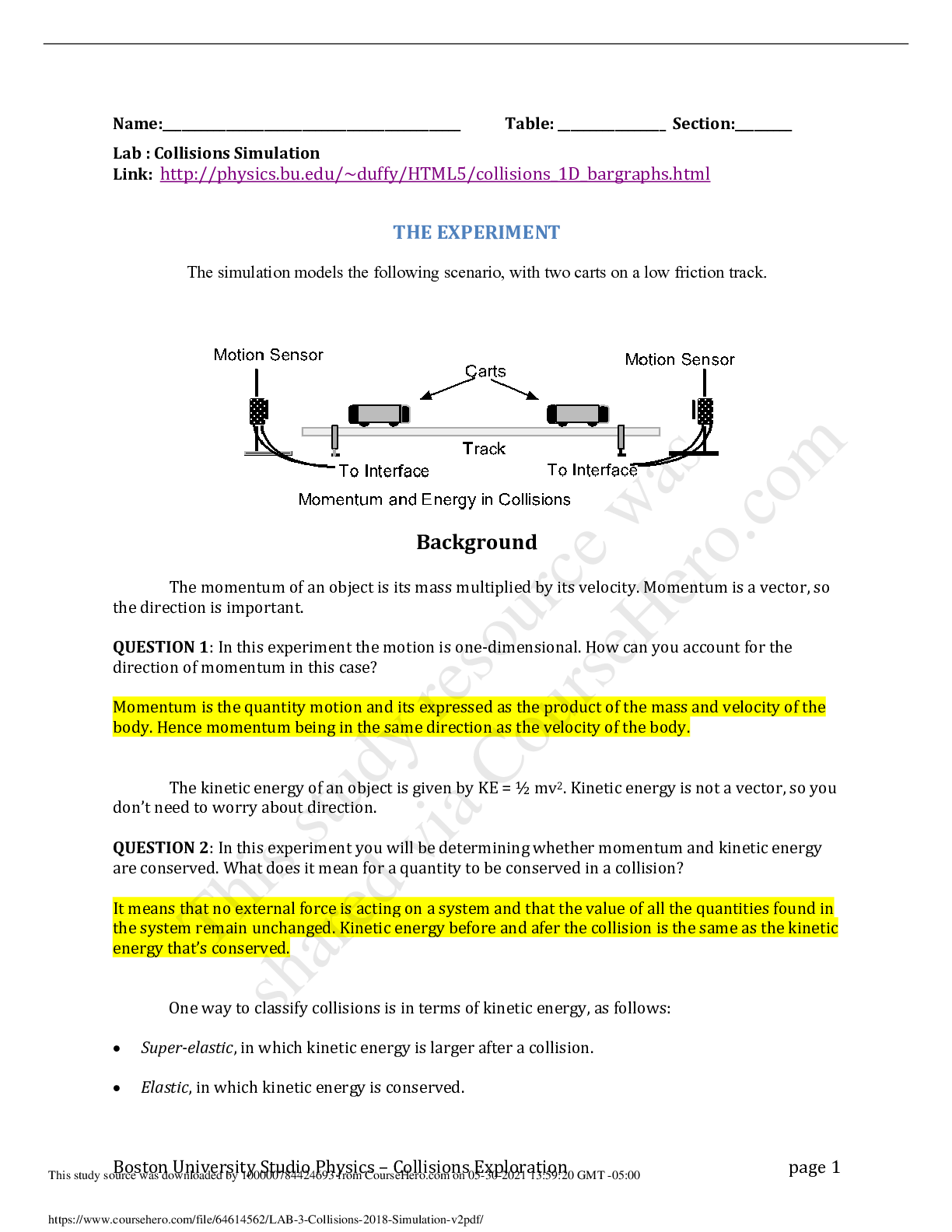



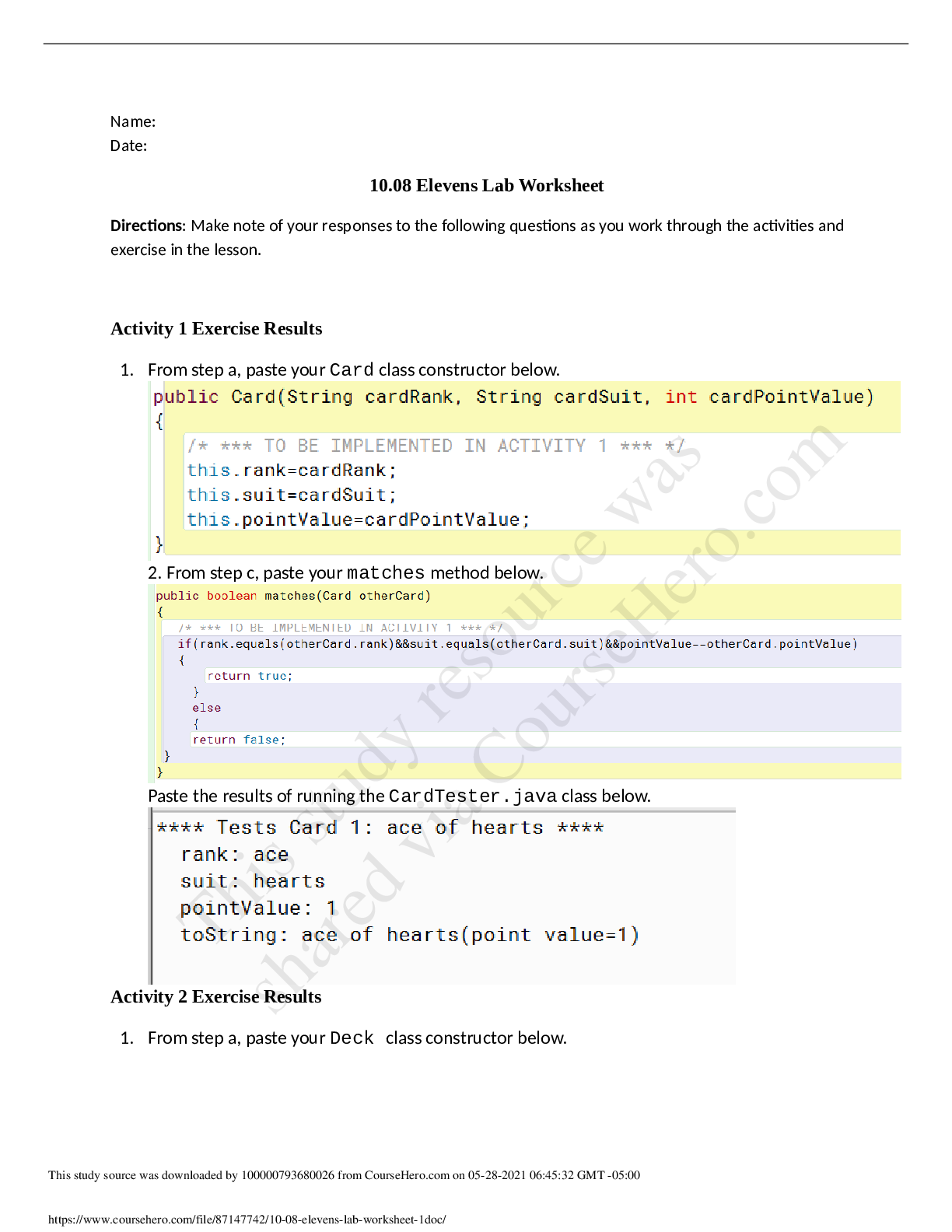
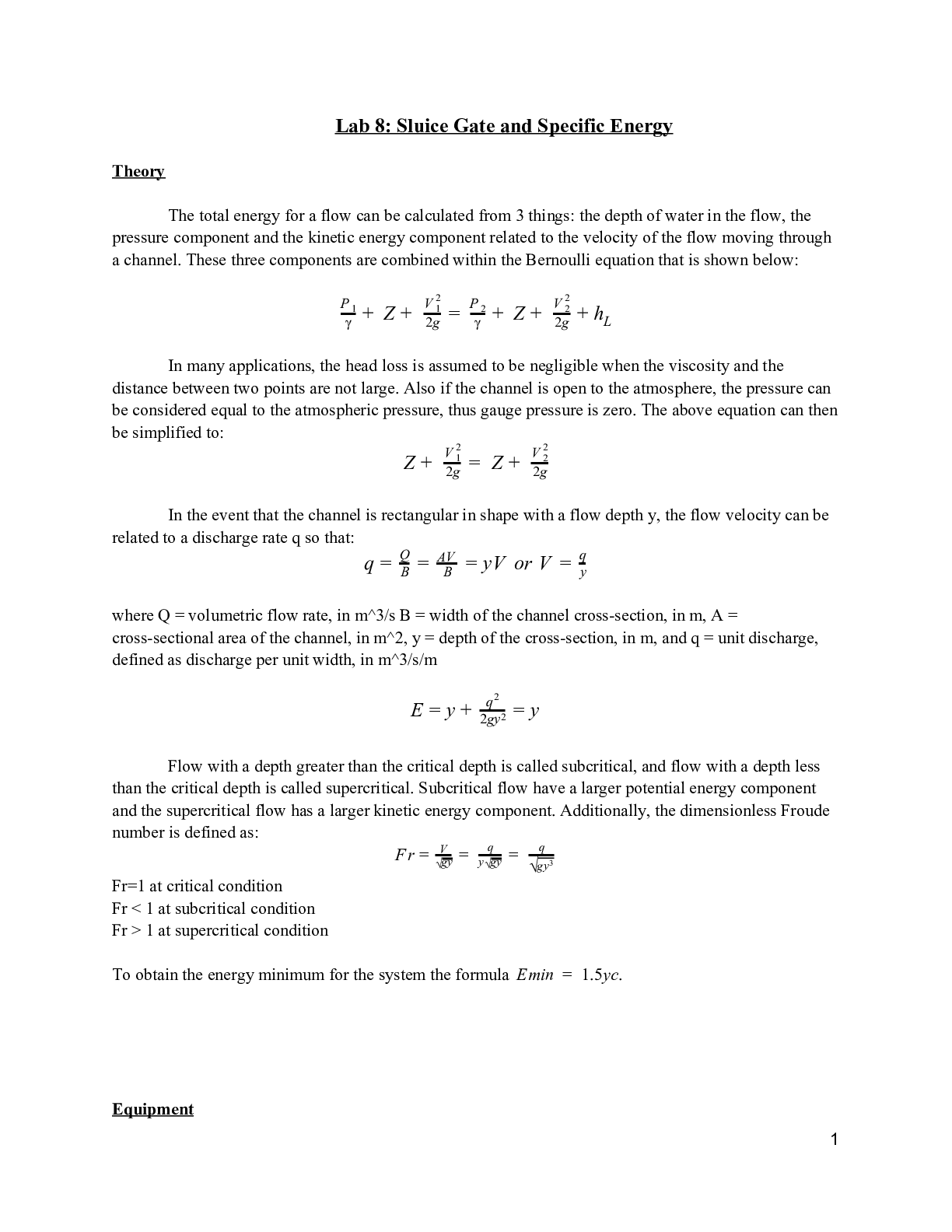
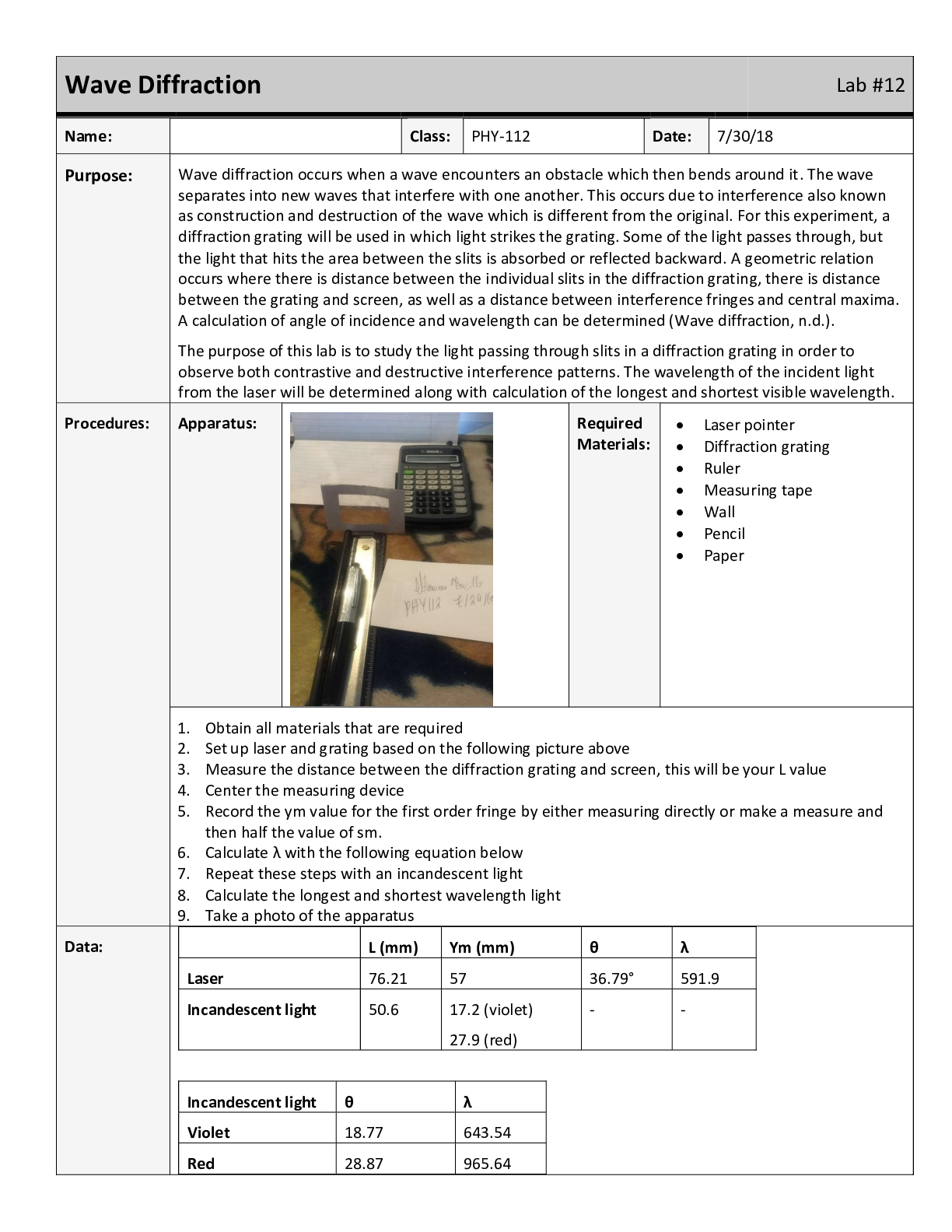

.png)

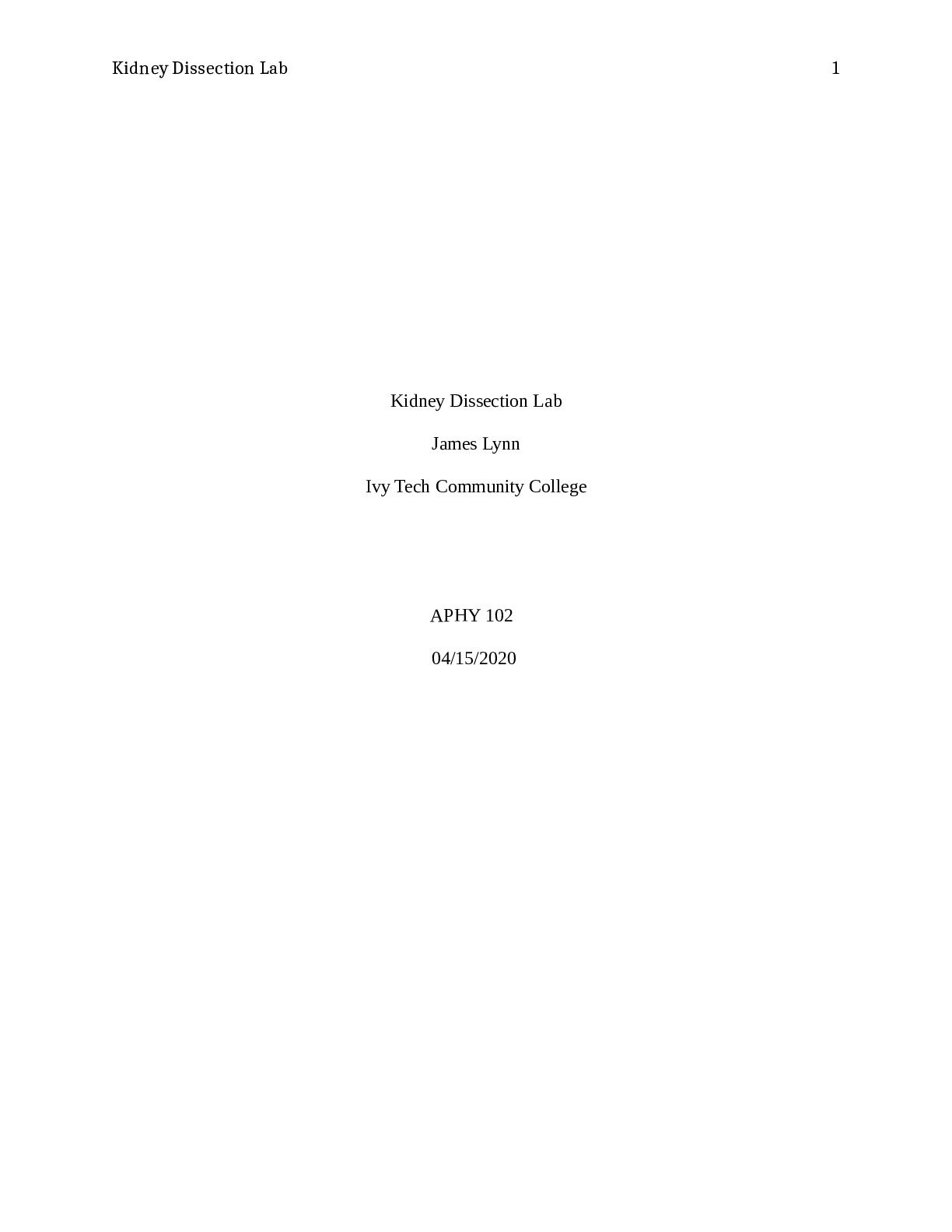



.png)

